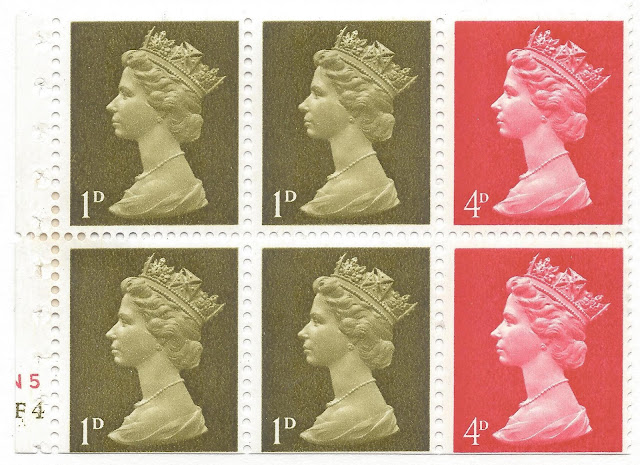It began life as an experiment in a new type of stamp vending machine. The five stamp multi-value horizontal coil strip was issued in these new vending machines on 27 August 1969. The multi-value coil comprised 2x2d, 1x3d, 1x1d, and 1x4d stamps. Rolls of these coils came in two sizes, one comprising 300 sets of fives stamps and one with 600 sets.
To understand the idea behind this experiment we need to remember that Great Britain was close to the switch to decimalisation at the time. With that in mind, let us consider that the total value of each 5 stamp strip dispensed from the machine equaled 1 shilling. Here's the really cool bit to the experiment. The current one shilling coin in use was the same size, weight, and value as the forthcoming decimal 5p coin. Therefore the vending machines - in theory - would not require any alteration when the decimalisation switch was made.
In the midst of all this drama was the humble 1d yellow ochre machin definitive stamp. This new version of the 1d was printed using Head B (see Part 1). It had one centre phosphor band and a change of gum from PVA to Arabic. This is a striking finale in the life of the 1d machin definitive.
.
Until next time...











+-+Copy.jpg)





